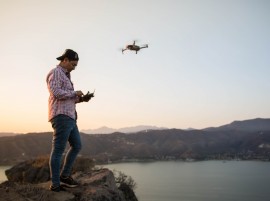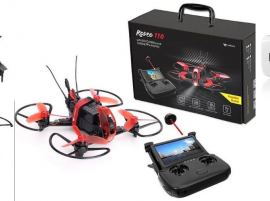London warned it’s not ready for robot taxis and drone deliveries
 Europe’s largest city is a hotbed of ideas to make getting around the metropolis that little bit easier — but it isn’t ready for them on the streets.
Europe’s largest city is a hotbed of ideas to make getting around the metropolis that little bit easier — but it isn’t ready for them on the streets.
London’s regulators are unprepared for the introduction of autonomous vehicles, delivery by drone and demand-responsive buses — all of which are on the horizon — the transport committee of the London Assembly said in a report on Tuesday. The group advising the mayor on policy compared the situation to the ongoing trouble the city has in integrating car-hailing apps like the one from Uber with its existing taxi fleet.
“The opportunity to improve mobility for millions of Londoners is here, but it will require proper planning, transparency and accountability, as well as cooperation with government, boroughs and development companies,” said Keith Prince, chairman of the London Assembly Transport Committee.
This breakneck speed of change pushed by technology companies is rubbing up against regulators everywhere. Uber is one of the most infamous cases. When it didn’t comply with local laws on taxis on the grounds that it was a technology company instead of a taxi operator, France and Germany banned some of the app’s services. London pulled Uber’s license to operate last year, and the issue remains unresolved.
TfL, the government body responsible for London’s transport system, was “caught napping on the technology front, and it’s time to wake up,” Mr Prince said. “Uber, then oBike are two examples of a poorly prepared regulator which seems to be making it up as they go along.”
Londoners will increasingly be looking for new ways to get from point A to B as traditional transport from the roads to the Underground get more crowded and sluggish. Some options that may emerge:
Autonomous vehicles
Having a computer at the wheel instead of a human could lead to less traffic accidents. But adding more cars on London’s roads would lead to even more congestion, the report said. Car-sharing or autonomous buses would be a better addition than simply replacing human-driven cars with autonomous vehicles, the committee recommends. It expects to see widespread use of robot-driven cars and buses by the 2030s.
Apps to hail a bus
Putting demand-responsive buses on the roads could further reduce car use, especially if they were used to plug gaps in the current transport network. This would require the creation and implementation of a new digital infrastructure to analyse demand, plan routes and connect to commuters.
Drones
Delivery machines that can both fly and navigate roads are under development. They could cut congestion as fewer trucks are used. Airborne drones in particular would need some kind of control system in place that would also try to reduce noise pollution, the report said.
Source: Bloomberg




